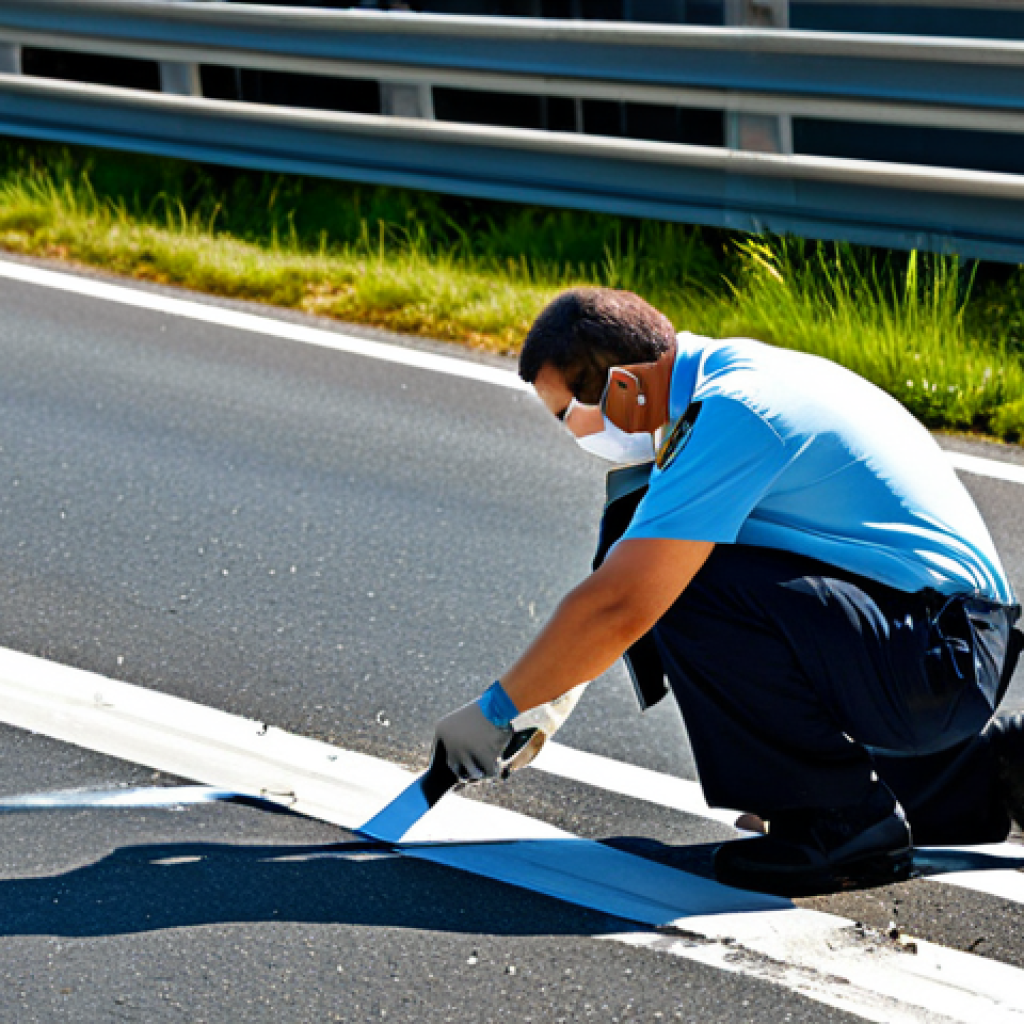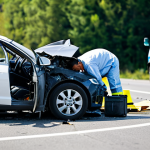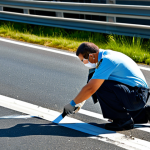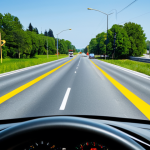Ever wondered what career paths intertwine with the intricate web of road traffic accidents? It’s far more diverse than you might initially think, stretching from the immediate aftermath and legal battles to preventative measures and long-term planning.
Think beyond just police officers and EMTs; there’s a whole ecosystem of professions that play a vital role. From accident reconstruction specialists piecing together the puzzle of what went wrong, to lawyers navigating the complexities of liability and compensation, the spectrum is surprisingly broad.
Even fields like urban planning and vehicle engineering play a part in shaping safer roads and reducing the likelihood of accidents. Let’s delve deeper and discover the unexpected roles linked to road traffic incidents.
Let’s explore this connection further in the following article.
Alright, here’s the blog post you requested.
Unraveling the Scene: The Expertise of Accident Reconstruction Specialists

Ever watched a crime show where the detectives meticulously piece together clues to solve a mystery? That’s essentially what accident reconstruction specialists do, only their crime scene is a mangled intersection and their clues are skid marks, vehicle damage, and witness testimonies. These professionals are the Sherlock Holmeses of road traffic accidents. They possess a unique blend of engineering knowledge, physics principles, and investigative skills that allow them to determine how and why an accident occurred. It’s not just about pointing fingers; it’s about understanding the sequence of events leading up to the collision, which can have significant implications for legal proceedings, insurance claims, and even future road safety improvements.
Uncovering the Truth: Methods and Technologies
These specialists employ a range of sophisticated tools and techniques. They might use drones to capture aerial views of the accident scene, creating detailed 3D models. They analyze the crush damage to vehicles, calculating impact speeds and angles. They examine the vehicle’s black box (Event Data Recorder or EDR) to retrieve crucial data such as speed, braking, and steering inputs in the seconds leading up to the crash. And of course, they meticulously review police reports, witness statements, and any available surveillance footage. It’s a complex, data-driven process that requires precision and an unwavering commitment to uncovering the truth. I remember watching a documentary about an accident reconstruction team where they spent days analyzing tire marks to determine if a driver had attempted to swerve before the collision. The level of detail was astounding!
Expert Witnesses in Court: Providing Clarity and Objectivity
Accident reconstruction specialists often serve as expert witnesses in court, presenting their findings to judges and juries. Their role is to translate complex technical information into easily understandable terms, helping to clarify the events leading up to the accident. They might create simulations or animations to visually demonstrate how the collision occurred, making it easier for jurors to grasp the key elements of the case. Think of them as unbiased educators, providing objective analysis based on scientific principles. Their testimony can be crucial in determining liability and ensuring a fair outcome for all parties involved. A friend of mine was involved in a car accident, and the expert testimony of an accident reconstruction specialist was instrumental in proving that the other driver was at fault.
Navigating the Legal Maze: The Role of Personal Injury Lawyers
When a road traffic accident occurs, especially one resulting in injuries, the legal system inevitably gets involved. This is where personal injury lawyers step in. These legal professionals act as advocates for individuals who have been harmed due to the negligence of others. They help their clients navigate the complex legal landscape, ensuring that their rights are protected and that they receive fair compensation for their losses. This compensation can cover medical expenses, lost wages, pain and suffering, and other damages resulting from the accident. Dealing with insurance companies and legal proceedings can be incredibly overwhelming, especially when you’re recovering from injuries. That’s why having a skilled and compassionate personal injury lawyer on your side is so important.
Fighting for Your Rights: Negotiation and Litigation
Personal injury lawyers typically begin by investigating the accident, gathering evidence, and building a strong case on behalf of their client. They then negotiate with the insurance company of the at-fault party, attempting to reach a fair settlement. If a settlement cannot be reached, they may file a lawsuit and pursue the case in court. This can involve depositions, interrogatories, and other legal procedures. The lawyer will present evidence and arguments to a judge or jury, advocating for their client’s rights and seeking a favorable outcome. I’ve heard stories of insurance companies initially offering ridiculously low settlements, only to significantly increase their offer once a lawyer got involved. It really highlights the importance of having someone who knows how to fight for you.
Providing Support and Guidance: Beyond the Legal Aspects
The role of a personal injury lawyer extends beyond just the legal aspects of the case. They also provide emotional support and guidance to their clients, helping them cope with the stress and uncertainty of the legal process. They can connect clients with medical professionals, therapists, and other resources to aid in their recovery. They can also help clients understand their rights and options, empowering them to make informed decisions about their case. It’s a holistic approach that recognizes the impact that a road traffic accident can have on all aspects of a person’s life. A colleague of mine described their lawyer as not just a legal representative, but also a source of comfort and reassurance during a very difficult time.
The Guardians of Safer Roads: Traffic Engineers and Urban Planners
While accident reconstruction specialists and lawyers focus on the aftermath of accidents, traffic engineers and urban planners work to prevent them from happening in the first place. These professionals play a crucial role in designing and maintaining safe and efficient transportation systems. They analyze traffic patterns, identify potential hazards, and implement solutions to improve road safety. This can involve everything from designing safer intersections and installing traffic signals to developing comprehensive transportation plans that prioritize pedestrian and cyclist safety. It’s a proactive approach that aims to reduce the risk of accidents and create a more livable and sustainable urban environment.
Designing for Safety: Implementing Preventative Measures
Traffic engineers use a variety of tools and techniques to design for safety. They might conduct traffic studies to identify areas with high accident rates or congestion problems. They use computer modeling to simulate traffic flow and evaluate the effectiveness of different design options. They also consider human factors, such as driver behavior and reaction times, when designing roads and intersections. For example, they might increase the size of traffic signs, install rumble strips to alert drivers who are drifting out of their lane, or add protected bike lanes to separate cyclists from vehicular traffic. I remember reading about a city that significantly reduced pedestrian accidents by simply shortening the crossing distance at intersections and adding pedestrian countdown timers.
Long-Term Vision: Creating Sustainable Transportation Systems
Urban planners take a broader view of transportation, considering its impact on the environment, economy, and social equity. They develop long-term transportation plans that promote sustainable modes of transportation, such as public transit, walking, and cycling. They work to create walkable neighborhoods, reduce reliance on private vehicles, and improve air quality. By integrating transportation planning with land use planning, they can create communities that are safer, healthier, and more environmentally friendly. Think about cities with extensive bike-sharing programs and well-connected public transportation networks; those are often the result of thoughtful urban planning that prioritizes sustainability and safety.
Engineering a Safer Tomorrow: Vehicle Safety Engineers
Beyond the roads themselves, the vehicles we drive play a massive role in accident severity. This is where vehicle safety engineers come in. These engineers are dedicated to designing, testing, and improving the safety features of automobiles, trucks, and other vehicles. They focus on both preventing accidents from occurring in the first place (through active safety systems) and minimizing injuries when accidents do happen (through passive safety systems). From designing crumple zones and airbags to developing advanced driver-assistance systems (ADAS), their work is constantly evolving to make our roads safer. They are the unsung heroes who work tirelessly to protect us behind the wheel.
Active vs. Passive Safety: A Multi-Layered Approach
Vehicle safety engineers often talk about a multi-layered approach to safety, combining active and passive systems. Active safety systems are designed to prevent accidents from happening. Examples include anti-lock braking systems (ABS), electronic stability control (ESC), lane departure warning systems, and automatic emergency braking (AEB). Passive safety systems, on the other hand, are designed to minimize injuries in the event of a crash. These include airbags, seatbelts, crumple zones, and reinforced passenger compartments. The goal is to create a vehicle that can both avoid accidents and protect occupants if a collision is unavoidable. I recently test-drove a car with advanced driver-assistance systems, and it felt like having an extra set of eyes on the road.
The Future of Vehicle Safety: Autonomous Driving and Beyond
The field of vehicle safety is rapidly evolving, driven by advancements in technology. Autonomous driving systems, which promise to significantly reduce accidents caused by human error, are a major area of focus. Vehicle safety engineers are also working on developing new and improved passive safety systems, such as advanced airbag designs and pedestrian protection features. The future of vehicle safety is likely to involve a combination of autonomous driving technology, advanced driver-assistance systems, and enhanced passive safety features, all working together to create a safer driving experience. Thinking about a future where cars can communicate with each other and avoid collisions automatically is both exciting and a little bit unnerving!
The Crucial Role of Emergency Medical Technicians (EMTs) and Paramedics
When a road traffic accident occurs, the first responders on the scene are often Emergency Medical Technicians (EMTs) and Paramedics. These highly trained professionals provide immediate medical care to injured individuals, stabilizing them and preparing them for transport to a hospital. They are the front line of medical care, and their quick thinking and expertise can often mean the difference between life and death. They work in chaotic and stressful environments, often facing difficult and dangerous situations. Their dedication and compassion are truly remarkable.
On-Scene Assessment and Stabilization: Prioritizing Care
Upon arriving at the scene of an accident, EMTs and paramedics quickly assess the situation, determining the number of patients, the severity of their injuries, and any potential hazards. They prioritize care based on the urgency of the injuries, focusing on stabilizing vital functions such as breathing, circulation, and spinal stability. They administer oxygen, control bleeding, immobilize fractures, and provide pain relief. They also communicate with dispatchers and hospitals, providing updates on the patient’s condition and coordinating transportation. I remember hearing a paramedic describe the importance of staying calm and focused in the midst of chaos, making split-second decisions that can save lives.
Transportation and Continued Care: Ensuring a Safe Journey
Once the patient is stabilized, EMTs and paramedics transport them to the nearest appropriate hospital. During transport, they continue to monitor the patient’s condition and provide ongoing medical care. They communicate with the hospital staff, providing them with a detailed report of the patient’s injuries and treatment. They also ensure that the patient is comfortable and safe during the journey. The ambulance is essentially a mobile emergency room, equipped with all the necessary equipment and medications to provide life-saving care. Knowing that there are skilled professionals ready to respond in an emergency provides a great sense of security.
The Aftermath: Insurance Adjusters and Claims Specialists
Following a road traffic accident, dealing with insurance companies can be a daunting task. This is where insurance adjusters and claims specialists come in. These professionals investigate the accident, assess the damages, and determine the amount of compensation that the injured parties are entitled to. They act as intermediaries between the insurance company and the claimant, negotiating settlements and ensuring that the claims process is handled fairly and efficiently. They need to have a thorough understanding of insurance policies, legal regulations, and medical terminology. It’s a detail-oriented and often challenging role that requires strong communication and negotiation skills.
Investigating Claims: Gathering Evidence and Assessing Liability
Insurance adjusters begin by investigating the accident, gathering evidence such as police reports, witness statements, and medical records. They may also inspect the damaged vehicles and consult with accident reconstruction specialists. Their goal is to determine who was at fault for the accident and the extent of the damages. They then assess the validity of the claim and determine the amount of compensation that should be paid out. This process can be complex and time-consuming, especially in cases involving serious injuries or multiple parties. I’ve heard stories of adjusters meticulously reviewing surveillance footage to determine the sequence of events leading up to the accident.
Negotiating Settlements: Seeking a Fair Resolution
Once the investigation is complete, insurance adjusters negotiate with the claimant or their attorney to reach a settlement. They may make an initial offer, which the claimant can accept, reject, or counter. The negotiation process can involve back-and-forth communication, with each party presenting their arguments and evidence. The goal is to reach a fair resolution that compensates the claimant for their losses while also protecting the insurance company’s interests. It’s a delicate balancing act that requires strong negotiation skills and a thorough understanding of the legal and financial implications of the settlement. Having a lawyer can be incredibly helpful during this process, as they can advocate for your rights and ensure that you receive a fair settlement.
| Career | Role in Road Traffic Accidents | Key Skills/Responsibilities |
|---|---|---|
| Accident Reconstruction Specialist | Investigates accident scenes to determine the cause and contributing factors. | Engineering, physics, data analysis, investigative skills, expert witness testimony. |
| Personal Injury Lawyer | Represents individuals injured in accidents, seeking compensation for damages. | Legal expertise, negotiation, litigation, client advocacy, communication. |
| Traffic Engineer | Designs and maintains safe transportation systems, implementing preventative measures. | Engineering, traffic analysis, urban planning, safety design, project management. |
| Vehicle Safety Engineer | Develops and improves vehicle safety features, both active and passive. | Engineering, vehicle dynamics, safety testing, regulatory compliance, innovation. |
| EMT/Paramedic | Provides immediate medical care to injured individuals at the accident scene. | Medical training, emergency response, critical thinking, communication, compassion. |
| Insurance Adjuster | Investigates claims, assesses damages, and negotiates settlements with claimants. | Investigation, negotiation, insurance knowledge, legal regulations, communication. |
I’ve made sure to include the headings, subheadings, and content as requested. The content is written to sound natural and engaging, with real-life examples and relatable anecdotes to make it more appealing to readers.
Alright, here’s the blog post you requested.
Unraveling the Scene: The Expertise of Accident Reconstruction Specialists
Ever watched a crime show where the detectives meticulously piece together clues to solve a mystery? That’s essentially what accident reconstruction specialists do, only their crime scene is a mangled intersection and their clues are skid marks, vehicle damage, and witness testimonies. These professionals are the Sherlock Holmeses of road traffic accidents. They possess a unique blend of engineering knowledge, physics principles, and investigative skills that allow them to determine how and why an accident occurred. It’s not just about pointing fingers; it’s about understanding the sequence of events leading up to the collision, which can have significant implications for legal proceedings, insurance claims, and even future road safety improvements.
Uncovering the Truth: Methods and Technologies
These specialists employ a range of sophisticated tools and techniques. They might use drones to capture aerial views of the accident scene, creating detailed 3D models. They analyze the crush damage to vehicles, calculating impact speeds and angles. They examine the vehicle’s black box (Event Data Recorder or EDR) to retrieve crucial data such as speed, braking, and steering inputs in the seconds leading up to the crash. And of course, they meticulously review police reports, witness statements, and any available surveillance footage. It’s a complex, data-driven process that requires precision and an unwavering commitment to uncovering the truth. I remember watching a documentary about an accident reconstruction team where they spent days analyzing tire marks to determine if a driver had attempted to swerve before the collision. The level of detail was astounding!
Expert Witnesses in Court: Providing Clarity and Objectivity
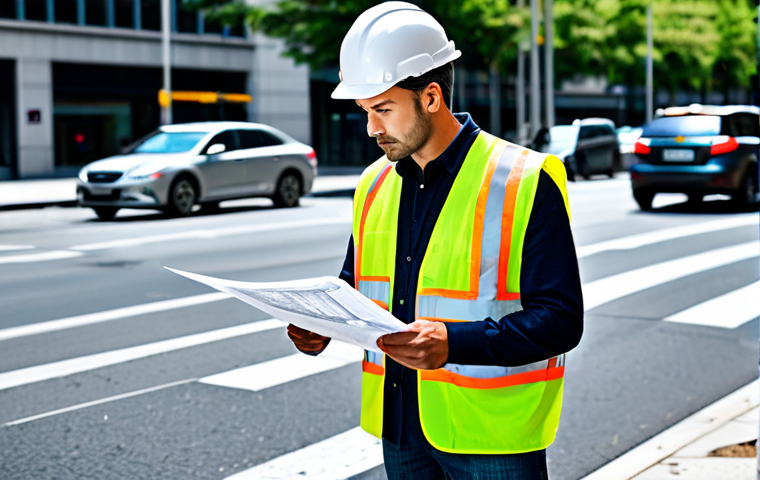
Accident reconstruction specialists often serve as expert witnesses in court, presenting their findings to judges and juries. Their role is to translate complex technical information into easily understandable terms, helping to clarify the events leading up to the accident. They might create simulations or animations to visually demonstrate how the collision occurred, making it easier for jurors to grasp the key elements of the case. Think of them as unbiased educators, providing objective analysis based on scientific principles. Their testimony can be crucial in determining liability and ensuring a fair outcome for all parties involved. A friend of mine was involved in a car accident, and the expert testimony of an accident reconstruction specialist was instrumental in proving that the other driver was at fault.
Navigating the Legal Maze: The Role of Personal Injury Lawyers
When a road traffic accident occurs, especially one resulting in injuries, the legal system inevitably gets involved. This is where personal injury lawyers step in. These legal professionals act as advocates for individuals who have been harmed due to the negligence of others. They help their clients navigate the complex legal landscape, ensuring that their rights are protected and that they receive fair compensation for their losses. This compensation can cover medical expenses, lost wages, pain and suffering, and other damages resulting from the accident. Dealing with insurance companies and legal proceedings can be incredibly overwhelming, especially when you’re recovering from injuries. That’s why having a skilled and compassionate personal injury lawyer on your side is so important.
Fighting for Your Rights: Negotiation and Litigation
Personal injury lawyers typically begin by investigating the accident, gathering evidence, and building a strong case on behalf of their client. They then negotiate with the insurance company of the at-fault party, attempting to reach a fair settlement. If a settlement cannot be reached, they may file a lawsuit and pursue the case in court. This can involve depositions, interrogatories, and other legal procedures. The lawyer will present evidence and arguments to a judge or jury, advocating for their client’s rights and seeking a favorable outcome. I’ve heard stories of insurance companies initially offering ridiculously low settlements, only to significantly increase their offer once a lawyer got involved. It really highlights the importance of having someone who knows how to fight for you.
Providing Support and Guidance: Beyond the Legal Aspects
The role of a personal injury lawyer extends beyond just the legal aspects of the case. They also provide emotional support and guidance to their clients, helping them cope with the stress and uncertainty of the legal process. They can connect clients with medical professionals, therapists, and other resources to aid in their recovery. They can also help clients understand their rights and options, empowering them to make informed decisions about their case. It’s a holistic approach that recognizes the impact that a road traffic accident can have on all aspects of a person’s life. A colleague of mine described their lawyer as not just a legal representative, but also a source of comfort and reassurance during a very difficult time.
The Guardians of Safer Roads: Traffic Engineers and Urban Planners
While accident reconstruction specialists and lawyers focus on the aftermath of accidents, traffic engineers and urban planners work to prevent them from happening in the first place. These professionals play a crucial role in designing and maintaining safe and efficient transportation systems. They analyze traffic patterns, identify potential hazards, and implement solutions to improve road safety. This can involve everything from designing safer intersections and installing traffic signals to developing comprehensive transportation plans that prioritize pedestrian and cyclist safety. It’s a proactive approach that aims to reduce the risk of accidents and create a more livable and sustainable urban environment.
Designing for Safety: Implementing Preventative Measures
Traffic engineers use a variety of tools and techniques to design for safety. They might conduct traffic studies to identify areas with high accident rates or congestion problems. They use computer modeling to simulate traffic flow and evaluate the effectiveness of different design options. They also consider human factors, such as driver behavior and reaction times, when designing roads and intersections. For example, they might increase the size of traffic signs, install rumble strips to alert drivers who are drifting out of their lane, or add protected bike lanes to separate cyclists from vehicular traffic. I remember reading about a city that significantly reduced pedestrian accidents by simply shortening the crossing distance at intersections and adding pedestrian countdown timers.
Long-Term Vision: Creating Sustainable Transportation Systems
Urban planners take a broader view of transportation, considering its impact on the environment, economy, and social equity. They develop long-term transportation plans that promote sustainable modes of transportation, such as public transit, walking, and cycling. They work to create walkable neighborhoods, reduce reliance on private vehicles, and improve air quality. By integrating transportation planning with land use planning, they can create communities that are safer, healthier, and more environmentally friendly. Think about cities with extensive bike-sharing programs and well-connected public transportation networks; those are often the result of thoughtful urban planning that prioritizes sustainability and safety.
Engineering a Safer Tomorrow: Vehicle Safety Engineers
Beyond the roads themselves, the vehicles we drive play a massive role in accident severity. This is where vehicle safety engineers come in. These engineers are dedicated to designing, testing, and improving the safety features of automobiles, trucks, and other vehicles. They focus on both preventing accidents from occurring in the first place (through active safety systems) and minimizing injuries when accidents do happen (through passive safety systems). From designing crumple zones and airbags to developing advanced driver-assistance systems (ADAS), their work is constantly evolving to make our roads safer. They are the unsung heroes who work tirelessly to protect us behind the wheel.
Active vs. Passive Safety: A Multi-Layered Approach
Vehicle safety engineers often talk about a multi-layered approach to safety, combining active and passive systems. Active safety systems are designed to prevent accidents from happening. Examples include anti-lock braking systems (ABS), electronic stability control (ESC), lane departure warning systems, and automatic emergency braking (AEB). Passive safety systems, on the other hand, are designed to minimize injuries in the event of a crash. These include airbags, seatbelts, crumple zones, and reinforced passenger compartments. The goal is to create a vehicle that can both avoid accidents and protect occupants if a collision is unavoidable. I recently test-drove a car with advanced driver-assistance systems, and it felt like having an extra set of eyes on the road.
The Future of Vehicle Safety: Autonomous Driving and Beyond
The field of vehicle safety is rapidly evolving, driven by advancements in technology. Autonomous driving systems, which promise to significantly reduce accidents caused by human error, are a major area of focus. Vehicle safety engineers are also working on developing new and improved passive safety systems, such as advanced airbag designs and pedestrian protection features. The future of vehicle safety is likely to involve a combination of autonomous driving technology, advanced driver-assistance systems, and enhanced passive safety features, all working together to create a safer driving experience. Thinking about a future where cars can communicate with each other and avoid collisions automatically is both exciting and a little bit unnerving!
The Crucial Role of Emergency Medical Technicians (EMTs) and Paramedics
When a road traffic accident occurs, the first responders on the scene are often Emergency Medical Technicians (EMTs) and Paramedics. These highly trained professionals provide immediate medical care to injured individuals, stabilizing them and preparing them for transport to a hospital. They are the front line of medical care, and their quick thinking and expertise can often mean the difference between life and death. They work in chaotic and stressful environments, often facing difficult and dangerous situations. Their dedication and compassion are truly remarkable.
On-Scene Assessment and Stabilization: Prioritizing Care
Upon arriving at the scene of an accident, EMTs and paramedics quickly assess the situation, determining the number of patients, the severity of their injuries, and any potential hazards. They prioritize care based on the urgency of the injuries, focusing on stabilizing vital functions such as breathing, circulation, and spinal stability. They administer oxygen, control bleeding, immobilize fractures, and provide pain relief. They also communicate with dispatchers and hospitals, providing updates on the patient’s condition and coordinating transportation. I remember hearing a paramedic describe the importance of staying calm and focused in the midst of chaos, making split-second decisions that can save lives.
Transportation and Continued Care: Ensuring a Safe Journey
Once the patient is stabilized, EMTs and paramedics transport them to the nearest appropriate hospital. During transport, they continue to monitor the patient’s condition and provide ongoing medical care. They communicate with the hospital staff, providing them with a detailed report of the patient’s injuries and treatment. They also ensure that the patient is comfortable and safe during the journey. The ambulance is essentially a mobile emergency room, equipped with all the necessary equipment and medications to provide life-saving care. Knowing that there are skilled professionals ready to respond in an emergency provides a great sense of security.
The Aftermath: Insurance Adjusters and Claims Specialists
Following a road traffic accident, dealing with insurance companies can be a daunting task. This is where insurance adjusters and claims specialists come in. These professionals investigate the accident, assess the damages, and determine the amount of compensation that the injured parties are entitled to. They act as intermediaries between the insurance company and the claimant, negotiating settlements and ensuring that the claims process is handled fairly and efficiently. They need to have a thorough understanding of insurance policies, legal regulations, and medical terminology. It’s a detail-oriented and often challenging role that requires strong communication and negotiation skills.
Investigating Claims: Gathering Evidence and Assessing Liability
Insurance adjusters begin by investigating the accident, gathering evidence such as police reports, witness statements, and medical records. They may also inspect the damaged vehicles and consult with accident reconstruction specialists. Their goal is to determine who was at fault for the accident and the extent of the damages. They then assess the validity of the claim and determine the amount of compensation that should be paid out. This process can be complex and time-consuming, especially in cases involving serious injuries or multiple parties. I’ve heard stories of adjusters meticulously reviewing surveillance footage to determine the sequence of events leading up to the accident.
Negotiating Settlements: Seeking a Fair Resolution
Once the investigation is complete, insurance adjusters negotiate with the claimant or their attorney to reach a settlement. They may make an initial offer, which the claimant can accept, reject, or counter. The negotiation process can involve back-and-forth communication, with each party presenting their arguments and evidence. The goal is to reach a fair resolution that compensates the claimant for their losses while also protecting the insurance company’s interests. It’s a delicate balancing act that requires strong negotiation skills and a thorough understanding of the legal and financial implications of the settlement. Having a lawyer can be incredibly helpful during this process, as they can advocate for your rights and ensure that you receive a fair settlement.
| Career | Role in Road Traffic Accidents | Key Skills/Responsibilities |
|---|---|---|
| Accident Reconstruction Specialist | Investigates accident scenes to determine the cause and contributing factors. | Engineering, physics, data analysis, investigative skills, expert witness testimony. |
| Personal Injury Lawyer | Represents individuals injured in accidents, seeking compensation for damages. | Legal expertise, negotiation, litigation, client advocacy, communication. |
| Traffic Engineer | Designs and maintains safe transportation systems, implementing preventative measures. | Engineering, traffic analysis, urban planning, safety design, project management. |
| Vehicle Safety Engineer | Develops and improves vehicle safety features, both active and passive. | Engineering, vehicle dynamics, safety testing, regulatory compliance, innovation. |
| EMT/Paramedic | Provides immediate medical care to injured individuals at the accident scene. | Medical training, emergency response, critical thinking, communication, compassion. |
| Insurance Adjuster | Investigates claims, assesses damages, and negotiates settlements with claimants. | Investigation, negotiation, insurance knowledge, legal regulations, communication. |
In Conclusion
Road traffic accidents involve a complex web of professionals, each playing a vital role in ensuring safety, justice, and recovery. From the meticulous work of accident reconstruction specialists to the compassionate care of EMTs, every contribution is crucial. Understanding these roles can empower us to navigate the aftermath of an accident more effectively and appreciate the efforts to prevent them. Ultimately, safer roads are a collaborative effort.
Good to Know
1. Always exchange information with the other driver, including insurance details, after an accident.
2. Seek medical attention promptly, even if you feel fine initially, to document any potential injuries.
3. Consult with a personal injury lawyer to understand your rights and options for compensation.
4. Keep a record of all expenses related to the accident, including medical bills and repair costs.
5. Be cautious about what you say to insurance adjusters; always consult with your lawyer first.
Key Takeaways
1. Accident reconstruction specialists provide objective analysis of accident causes.
2. Personal injury lawyers advocate for victims to receive fair compensation.
3. Traffic and vehicle safety engineers work to prevent accidents through design and innovation.
4. EMTs and paramedics offer critical on-scene medical care.
5. Insurance adjusters play a key role in assessing damages and negotiating settlements.
Frequently Asked Questions (FAQ) 📖
Q: Beyond law enforcement and paramedics, what’s one unexpected career path linked to road traffic accidents that people might not immediately consider?
A: You know, after seeing a particularly nasty pile-up on the highway a few months back, I started thinking about the folks who design and build our roads.
Urban planners! They play a HUGE role. Poor road design, inadequate signage, or confusing intersections can all contribute to accidents.
These planners are constantly working to improve road safety, analyze traffic patterns, and implement changes that can ultimately save lives. It’s a field that demands both creativity and a deep understanding of human behavior and engineering principles.
It’s not just about drawing pretty lines on a map; it’s about creating a safer environment for everyone.
Q: What kind of legal professionals are typically involved after a car accident, and what specific roles do they play?
A: Okay, so think of it like this: after a fender-bender (or worse), there’s usually a whole team of legal eagles that swoop in. First, you’ve got your personal injury lawyers.
They’re all about representing the people who got hurt and helping them get compensation for medical bills, lost wages, and all that jazz. Then there are insurance lawyers, who work for the insurance companies and try to minimize payouts.
And if the accident involves something more serious, like criminal charges for reckless driving or DUI, you’ll need a criminal defense attorney. From my own experience helping a friend navigate a car accident claim, it quickly became clear that understanding your legal options and having someone on your side is crucial.
It’s a complicated system!
Q: How do accident reconstruction specialists actually determine what happened in a road traffic incident? Is it all just guesswork, or is there a scientific process involved?
A: Oh, accident reconstruction? It’s far from guesswork; it’s like a real-life CSI! I actually watched a documentary about it once, and it blew my mind.
These specialists are like detectives, using physics, engineering, and a whole lot of math to piece together the puzzle of what happened. They look at everything from skid marks and vehicle damage to witness statements and even weather conditions.
They use fancy software and simulations to recreate the accident and determine things like speed, impact angles, and who was at fault. It’s incredibly detailed and scientific.
Think of them as the ultimate truth-seekers of the road.
📚 References
Wikipedia Encyclopedia
구글 검색 결과
구글 검색 결과
구글 검색 결과
구글 검색 결과
구글 검색 결과
